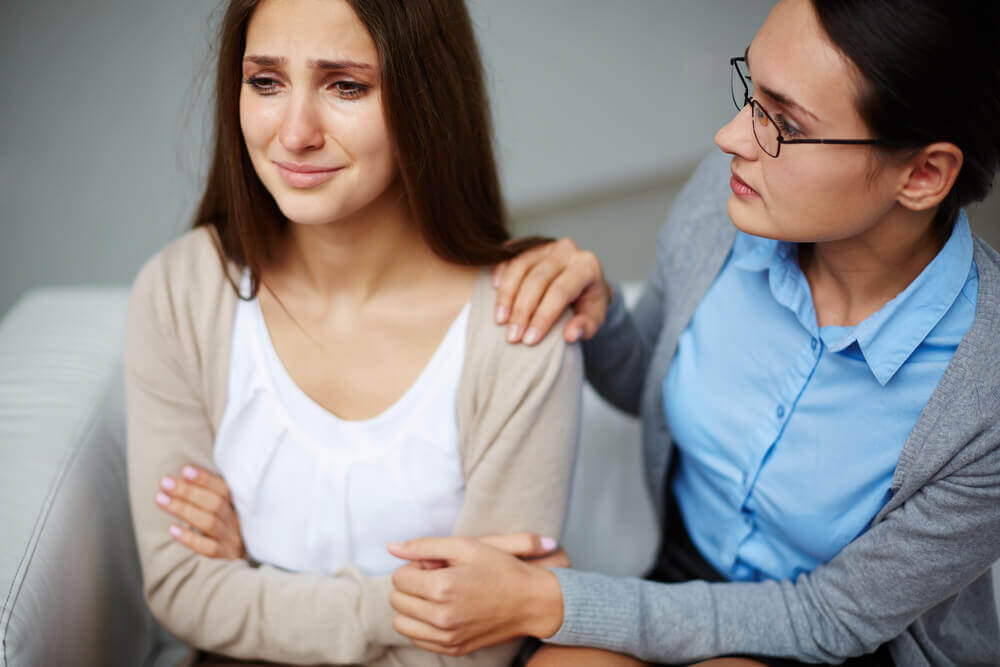Psychological Abuse in Adolescence


Reviewed and approved by the psychologist María Alejandra Castro Arbeláez
Psychological abuse in adolescence is a painful reality that millions of young people face around the world. It often goes unnoticed, as people always tend to focus on the signs of abuse they’re accustomed to seeing. That is, the physical wounds from violence.
Many people ignore the fact that psychological abuse leaves a deep, permanent mark on people. The extreme consequences of psychological abuse in adolescence can lead to youth violence, drug use, and other self-destructive behaviors.
With so many negative consequences, we need to pay attention to this terrible emotional damage that children may be exposed to.
Psychological abuse in adolescence
In short, psychological abuse consists of harming another person through negative discourse. This includes insults, regardless of tone of voice (shouting isn’t always needed to make a person feel bad).
It makes people feel inferior, ashamed, and frustrated. It can generate feelings of anguish, abandonment, restlessness, uneasiness, rejection, etc.
Psychological abuse includes:
- Teasing
- Sarcasm
- Coercion
- Discredit
- Extortion
- Blame
- Negative criticism
- Verbal violence
- Disqualifications
- Emotional neglect
- Social and emotional isolation
- Excessive control and overprotection

Certainly, most people may have suffered one or more of these forms of abuse by the time they reach adulthood. In fact, school age is when you can experience the most abuse.
However, this doesn’t mean emotional abuse doesn’t happen at home. It can happen consciously or without realizing it.
Considerations about abusive people
Psychological abuse is part of a cycle of behavior learning. Many people who are abusive come from homes or social environments in which they were victims themselves.
Consequently, they recreate the situations they experienced because they think the abuse they went through is completely normal.
To prevent this from happening again, it’s important to start with how you interact with your own children.
In turn, pay attention to how they express themselves to you. This gives you clues to know if they’re having trouble socially at school.
Indicators to know if a teenager suffers psychological abuse
There are clear signs to know if a teen suffers psychological abuse. Shyness, not looking people in the eyes, and stuttering are some.
Other signs include problems concentrating and getting along with others, pessimism, aggression, fear of going to public school or public places, sleep problems, apathy and desire to be alone most of the time. Other more alarming signs are anorexia, suicide attempts, cutting and committing acts of violence.
Bullying
Bullying is a social problem that no longer goes unnoticed. However, there is still a long way to go to fix it.
In fact, major TV networks have released programs that show the effects of bullying. They show suicide and violent attacks with weapons, and how bullying is leading to very serious problems in the United States.
Every day, the consequences of ridicule, rejection and exclusion are becoming worse. Experts believe this significantly damages teens’ mental health. The most common consequences are self-esteem issues, anxiety and depression.

Ways to address psychological abuse in adolescence
This problem in teens is a big challenge to overcome. Often, those who do it and those who suffer from it aren’t aware of the consequences in the moment.
Research shows that one third of children and adolescents who have been victims will eventually repeat the same abusive behavior. They’ll continue the cycle of abuse with their own families.
That’s why we need to constantly reflect on our actions. It’s also important to see a psychologist to review both your behavior and your children’s. Psychologists can help us overcome abuse and bullying.
All cited sources were thoroughly reviewed by our team to ensure their quality, reliability, currency, and validity. The bibliography of this article was considered reliable and of academic or scientific accuracy.
- Arruabarrena, M. (2011). Maltrato psicológico a los niños, niñas y adolescentes en la familia: definición y valoración de su gravedad. Psychosocial intervention, 20(1), 25-44. http://scielo.isciii.es/scielo.php?pid=S1132-05592011000100004&script=sci_abstract&tlng=en
- Valadez, I., Amezcua, R., González, N., Montes, R., & Vargas, V. (2011). Maltrato entre iguales e intento suicida en sujetos adolescentes escolarizados. Revista Latinoamericana de Ciencias Sociales, Niñez y Juventud, 9(2), 783-796. https://www.redalyc.org/pdf/773/77321592020.pdf
- Galeano, C. L. S., & Varas, P. A. T. (2018). Violencia contra niños y adolescentes ejercida por cuidadores. Informes psicológicos, 18(1), 13-34. https://revistas.upb.edu.co/index.php/informespsicologicos/article/view/600/429
- Garbarino, J., GUTTMANN, E., & SEELEY, J. (1986). Maltrato Psicológico. https://www.congresofapmi.es/imagenes/auxiliar/9curso_james_II%20CONGRESOa.pdf
- García-Piña, C. A. (2008). Riesgos del uso de internet por niños y adolescentes. Estrategias de seguridad. Acta pediátrica de México, 29(5), 272-278. https://www.redalyc.org/pdf/4236/423640313006.pdf
- Loredo-Abdalá, A., Perea-Martínez, A., & López-Navarrete, G. E. (2008). “Bullying”: acoso esocolar. La violencia entre iguales. Problemática real en adolescentes. Acta pediátrica de México, 29(4), 210-214. https://www.medigraphic.com/cgi-bin/new/resumen.cgi?IDARTICULO=19590
This text is provided for informational purposes only and does not replace consultation with a professional. If in doubt, consult your specialist.








